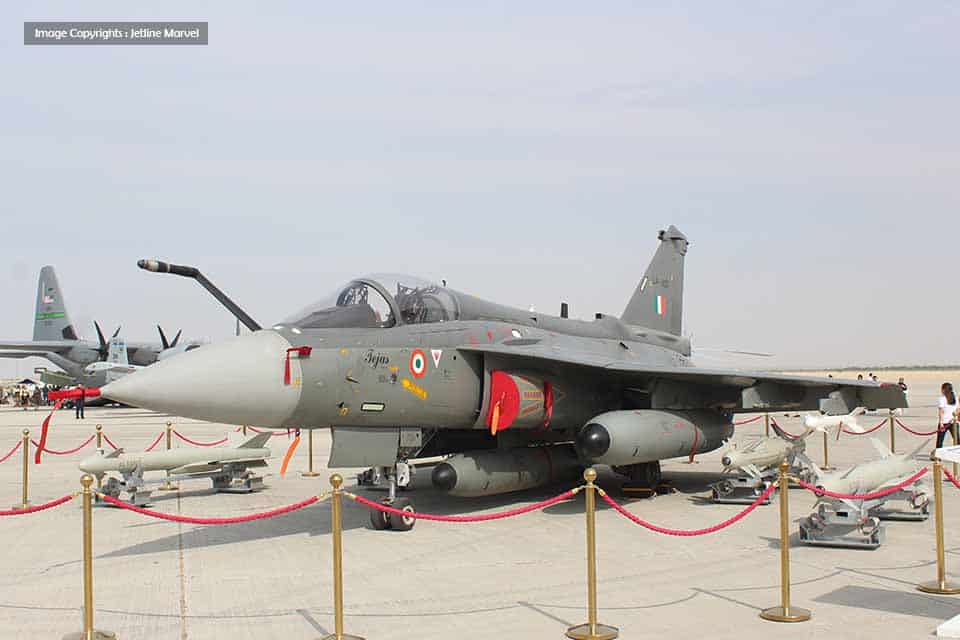Aviation
Is HAL Planning to Fit the Rafale’s M-88 Engine into Tejas?

India is at the forefront of developing fighter jets for its defense sector and is prepared to face any challenge. The Tejas Mark 1A, a notable success, has garnered attention for its capability to carry various weapons and integrate advanced avionics.
However, a significant challenge remains with the engine. Currently, India relies on foreign nations to provide engines for its fighter jets. To address this, India has made an agreement with GE Engine makers for supply. However, supply chain issues have led to delays in engine delivery. As a result, HAL is considering an alternative: switching to the European Eurojet, which powers the Rafale fighter jet.
How will be the Tejas Mark 2 compared to the F-16 block 50/52?:Click here
In the early stages of the Tejas MkII’s development around 2010, the Indian Air Force (IAF) preferred the European Eurojet EJ200 engine used in the Eurofighter Typhoon. They wanted to diversify their engine suppliers to reduce dependency on a single foreign entity. However, the Aeronautical Development Agency (ADA) chose the GE F414IN6 engine for the Tejas MkII due to its cost-effectiveness.
The tejas mk2 design will fly with the GE F414IN6, but the IAF’s initial interest in the EJ200 highlights the need to consider multiple options in defense acquisitions.
India’s Hindustan Aeronautics Limited (HAL) Tejas Mk1 and Mk1A light combat aircraft currently use General Electric GE-404 engines. Delivery delays from GE sparked discussions about alternatives, like the Safran M-88-3 engines used in Dassault’s Rafale jets. However, replacing the GE-404 with the M-88-3 faces several challenges.
The GE-404 engine is known for reliability and performance, producing 84 kN of thrust with afterburner compared to the M-88-3’s 75 kN. The dimensions also differ, requiring significant internal changes to the fuselage for an engine swap.
Building the LCA Tejas Mark 2 prototype could take longer than expected:Click here
Safran’s M-88-3 engines are optimized for the Rafale program, and scaling production to meet Indian needs would require significant adjustments and investments. Transitioning engines would also involve establishing new supply chains and logistical frameworks, including sourcing components and training personnel.
Any new engine integration would need rigorous certification and testing, extending timelines and increasing costs. Engine selection also considers geopolitical and economic factors, strategic partnerships, and domestic industrial benefits. lca tejas mk2
While the Safran M-88-3 engine offers competitive performance, transitioning is complicated. The GE-404’s higher thrust, existing integration in the Tejas program, and established supply chain make it the more practical choice currently. Safran’s production capabilities would need significant adaptation to meet India’s needs.

Aviation
COMAC Unveils Plans for the C929 to Rival Airbus and Boeing

After the success of China’s first C919 aircraft, the country is setting its sights on developing a larger plane. COMAC (Commercial Aircraft Corporation of China) has officially confirmed plans to build a widebody aircraft, marking a significant step in its aircraft lineup.
Traditionally, Airbus and Boeing dominate the widebody aircraft market, with decades of expertise in developing planes and engines capable of carrying heavy payloads. China, which currently relies on imported engines, is now aiming to challenge these giants with its own widebody jet, the C929, designed to compete with the Airbus A350 and Boeing 777.
American Airlines Is Looking for Flight Attendants: Apply Now
The C929 will be China’s first independently developed long-range widebody aircraft. It adheres to international airworthiness standards and boasts independent intellectual property rights. The baseline version is designed to seat 280 passengers and offers a range of 12,000 kilometers, catering to global demand for both regional and international air travel.
Russia, which also needs reliable narrowbody and widebody aircraft, could become a key customer for the C929. Additionally, China plans to target the broader Asian market as it continues to expand its aviation capabilities.
Close Call at Heathrow: BA Flight Narrowly Escapes Drone Collision
China’s aviation progress includes the ARJ21 (now called C909), a regional jet with 100 seats for shorter routes, and the C919, a narrowbody jet with 180 seats designed to rival the Boeing 737 MAX and Airbus A320. Both models have found increasing demand in the domestic market.
At China’s largest air show in Zhuhai, COMAC announced that Air China will be the launch customer for the C929 widebody jet, though details about order size and delivery timelines were not disclosed.
Other major deals announced by COMAC include:
- Hainan Airlines: Firm orders for 60 C919 and 40 C909 regional jets.
- Colorful Guizhou Airlines: 30 C909 jets, with 20 firm orders and 10 provisional agreements.
The C929, renamed from the CR929 after Russia withdrew from the joint development project in 2023, is expected to carry 280–400 passengers with a range of 12,000 kilometers, competing directly with Boeing’s 787 Dreamliner.
According to COMAC’s deputy general manager, Tong Yu, the first fuselage section of the C929 is expected by September 2027, with prototype test flights anticipated soon after.
-

 Aviation2 months ago
Aviation2 months agoMicrosoft Flight Simulator Raises $3 Million to Bring Back the An-225 Mriya
-

 Airlines2 months ago
Airlines2 months agoQantas Engineers Stage Walkout Over Cost of Living Concerns
-

 Airlines2 months ago
Airlines2 months agoQatar Citizens Can Travel to the United States Without a Visa
-

 Aviation2 months ago
Aviation2 months agoQatar Airways bans these new Electronic Devices on plane
-

 Airlines2 months ago
Airlines2 months agoJapan Airlines Rolls Out Free Domestic Flights to International Passengers
-

 Defence2 months ago
Defence2 months agoWhich Country Has the Largest Fleet of Fighter Aircraft?
-

 Airport2 months ago
Airport2 months agoWestern Sydney Airport Welcomes Its First Plane After 6 Years of construction
-

 Aviation2 months ago
Aviation2 months agoDid you know ? Once Boeing 747 carried 1088 passenger in 1991








